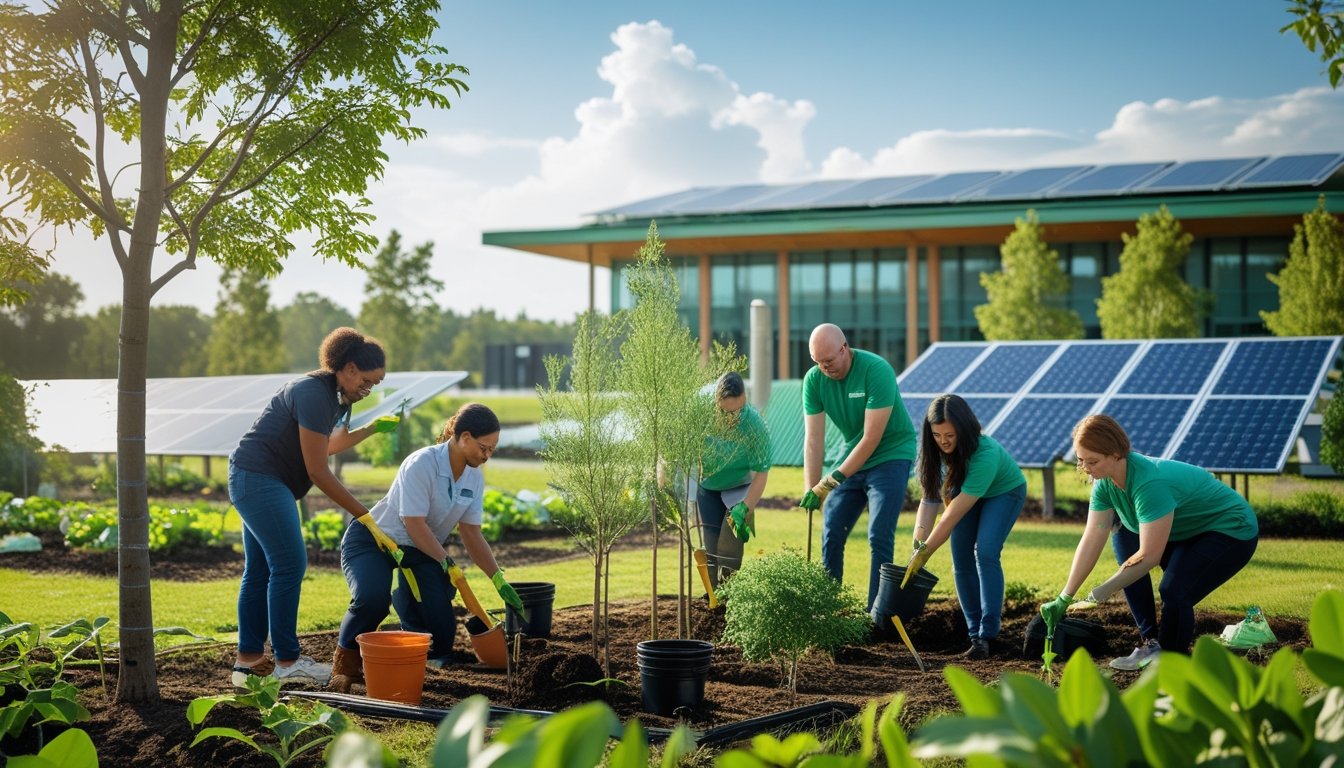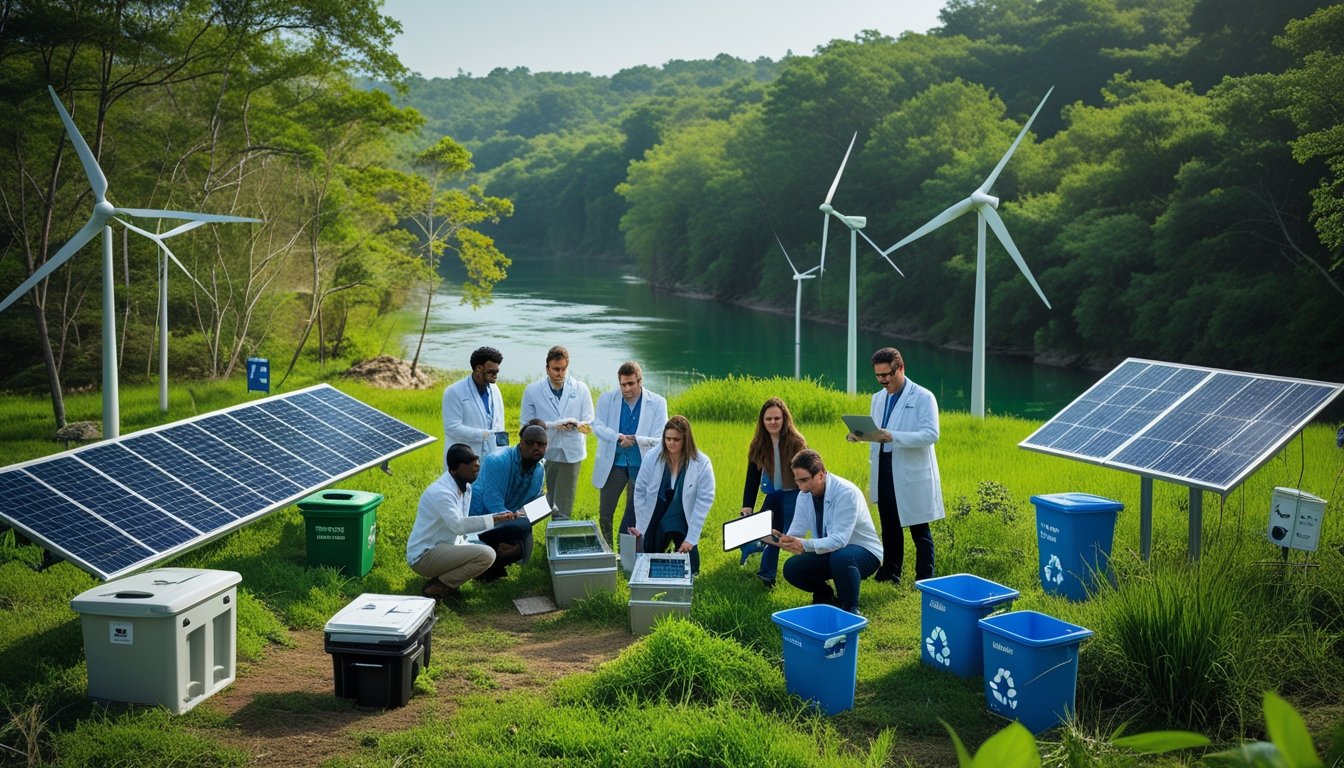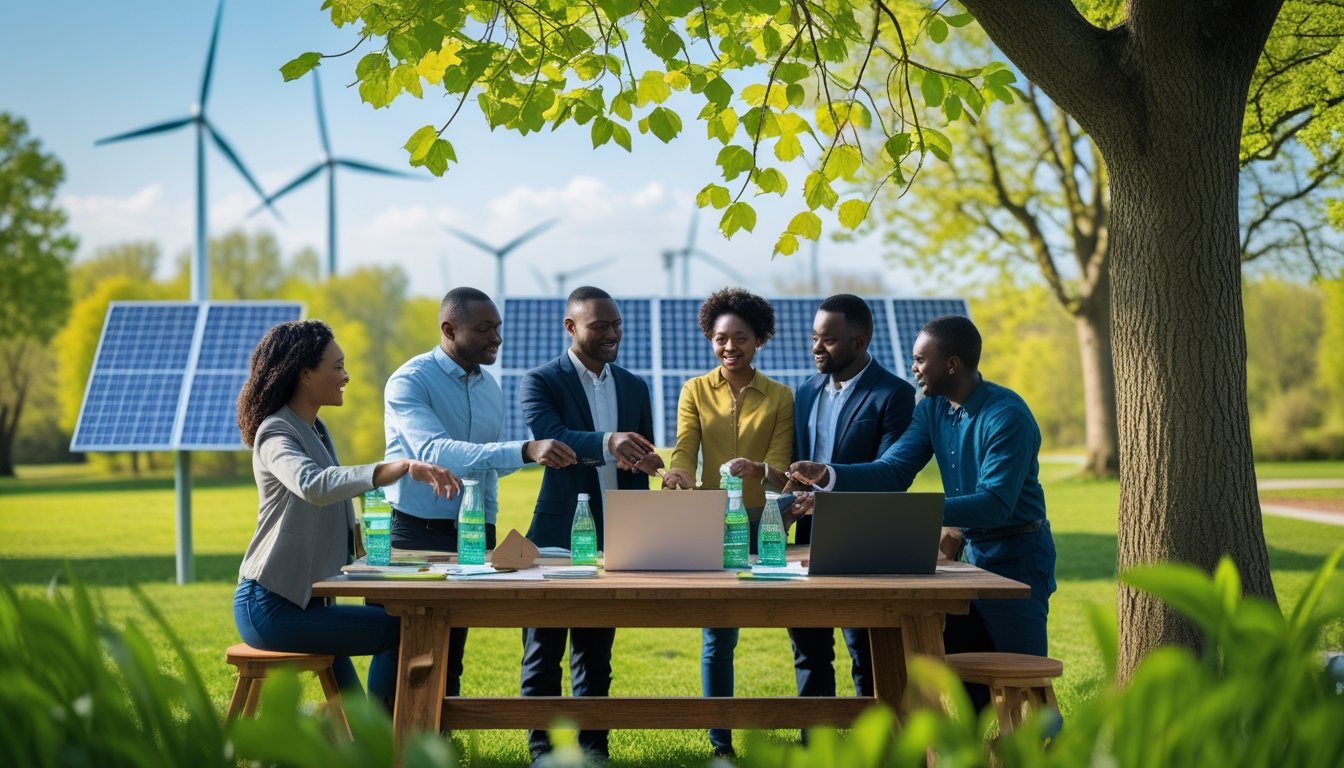Late updated: 26 Jun 2025 15:06
Written by: Ella Thompson
Exploring Eco-Friendly Recovery Approaches: Sustainable Solutions for the Future
Embracing eco-friendly recovery approaches opens new doors for sustainable and holistic healing journeys. By integrating these practices into addiction recovery, we not only enhance personal well-being but also contribute positively to environmental health. Sustainable sobriety offers a dual path: healing ourselves and nurturing the planet.

Our exploration of eco-conscious practices focuses on methods like green detoxification and utilising natural materials. These strategies align health with environmental priorities, reshaping traditional recovery paradigms. Connecting recovery with green living underscores a broader vision of healing—one that embraces the earth's well-being alongside personal growth.
Recognising the symbiotic relationship between sustainable living and recovery elevates our understanding of recovery processes. This connection encourages us to innovate and adopt environmentally friendly practices, crafting a future where recovery is both personal and planetary. Let's explore these concepts further and understand how they enrich our journeys towards lasting sobriety.
Key Takeaways
- Eco-friendly recovery enhances both personal and planetary health
- Green detoxification is central to sustainable sobriety
- Sustainable practices innovate traditional recovery methods
Core Principles of Eco-Friendly Recovery Approaches
In our pursuit of integrating eco-friendly practices into recovery approaches, we focus on using sustainable practices and reducing our environmental footprint. These entail employing resource-efficient methods and embracing the circular economy to minimise waste.
Sustainable Recovery and Environmental Sustainability
We recognise the importance of aligning our recovery efforts with environmental sustainability. This entails using eco-friendly materials that reduce the carbon footprint and improve health outcomes. Utilising renewable resources and energy sources such as solar and wind power enables us to operate sustainably.
Green technologies play a crucial role in enhancing recovery processes. These innovations can improve the efficiency of our programmes, allowing us to offer more sustainable and effective solutions. Implementing sustainable practices throughout recovery ensures long-term benefits for both individuals and the planet.
Reducing Environmental Impact Through Resource Efficiency
Achieving resource efficiency in recovery is pivotal. We aim to optimise the use of materials, energy, and water to achieve significant resource savings. By prioritising energy efficiency and reducing resource consumption, we minimise the environmental impact of recovery programmes.
Strategies such as energy audits and implementing energy-saving initiatives can help us identify areas where improvements are needed. Furthermore, educating participants and staff about efficient resource use will contribute significantly to a more eco-friendly recovery environment.
Integrating Circular Economy and Waste Reduction
Embracing the principles of the circular economy, we focus on minimising waste within recovery programmes. By promoting waste reduction and recycling initiatives, we create systems that continuously use materials without generating excess waste. This approach not only reduces the environmental impact but also offers economic benefits.
Recycling and reusing materials within recovery settings can significantly minimise waste. We also encourage participants to adopt these practices as part of their personal recovery journey. In doing so, we build a culture of sustainability that extends beyond our facilities and into local communities.
Practices and Innovations in Eco-Friendly Recovery

Integrating eco-friendly practices in recovery efforts can lead to substantial benefits for personal growth and mental well-being. By embracing sustainable approaches, we can enhance the recovery environment and foster a sense of community and responsibility towards our ecosystems.
Nature-Based Activities and Green Spaces
Engaging in nature-based activities can be a transformative part of the recovery process. Green spaces provide a calming environment, helping to alleviate stress and anxiety. Walking, hiking, and meditating in parks or forests are simple yet effective methods to connect with nature.
Biodiversity in these areas enhances our sense of connection to the Earth, promoting environmental stewardship. By facilitating activities such as tree planting or birdwatching, we can encourage a deeper appreciation for our ecosystems while supporting personal recovery journeys.
Mindfulness and Holistic Approaches
Mindfulness practices play a crucial role in recovery, fostering mental well-being and personal growth. Techniques like meditation, yoga, and tai chi promote a heightened awareness of the present moment, allowing us to manage stress more effectively.
Holistic approaches, integrating mindfulness into daily routines, support individuals in understanding their emotional responses and developing healthier coping mechanisms. These practices encourage a sustainable lifestyle, focusing on balance and harmony with the environment, and align with broader eco-friendly living principles.
The Role of Community Gardens and Environmental Stewardship
Community gardens serve as a vital component in eco-friendly recovery. They create spaces for individuals to engage with nature through gardening, contributing to both physical and mental health improvements. These gardens support a sense of community, fostering connectedness and collaboration.
Involvement in gardening initiatives encourages environmental stewardship, teaching participants about sustainable practices such as composting and recycling. By promoting eco-friendly living, community gardens act as a platform for innovation and lasting environmental impact, reinforcing recovery efforts.
Sustainable Products and Eco-Friendly Living
Integrating sustainable products into daily life is an essential aspect of eco-friendly recovery. Opting for eco-friendly products, such as those made from recycled materials or solar-powered devices, supports environmental sustainability while enhancing personal well-being.
We can choose sustainable options in all aspects of life, from clothing to household items, reinforcing the principles of eco-friendly living. Embracing these practices not only benefits the environment but also sets a positive example for others, creating a culture of sustainability and resilience that underpins successful recovery journeys.
Frequently Asked Questions

Eco-friendly recovery integrates sustainability into efforts across various domains. From effective waste management to integrating renewable energy, these practices build resilience, foster community involvement, and support economic recovery.
What are the most effective strategies for promoting sustainable waste management?
Sustainable waste management involves reducing, reusing, and recycling waste materials. Implementing comprehensive recycling programmes and encouraging composting can significantly reduce landfill waste. Innovative technologies, such as waste-to-energy conversion, also contribute to efficient waste handling.
How can renewable energy sources be integrated into disaster recovery plans?
Incorporating renewable energy in disaster recovery is crucial for sustainable rebuilding. Solar panels and wind turbines can provide electricity in affected areas, reducing dependency on fossil fuels. Portable renewable energy sources can be deployed quickly, supporting immediate relief efforts and fostering long-term sustainability.
In what ways can community involvement enhance environmental restoration efforts?
Community involvement is pivotal for successful environmental restoration. By engaging local volunteers, we ensure that restoration activities align with the community's needs and values. Educational programmes can further raise awareness, encouraging more residents to participate in conservation efforts. This collective action accelerates restoration and fosters a deeper connection to the local environment.
What role does policy play in supporting the adoption of green technologies post-disaster?
Policies are vital for the widespread adoption of green technologies after disasters. Government incentives can encourage investment in renewable energy and eco-friendly infrastructure. Regulatory frameworks can ensure that reconstruction efforts prioritise sustainability. Advocating for policies that support green innovation ensures a resilient and environmentally responsible recovery process.
How do eco-friendly practices contribute to building resilience in recovering economies?
Eco-friendly practices enhance economic resilience by reducing vulnerability to future environmental impacts. Sustainable agriculture, renewable energy, and green infrastructure attract investments and create jobs. These practices decrease dependency on imports and foster local economic growth. As a result, recovering economies become more self-sufficient and adaptable.
Can you outline the benefits of using green infrastructure for urban regeneration?
Green infrastructure offers numerous benefits for urban regeneration. It improves air and water quality, reduces urban heat, and enhances biodiversity. Parks, green roofs, and permeable pavements mitigate flooding and provide recreational spaces for communities. By integrating nature into urban landscapes, we create healthier, more resilient cities that are better suited to adapt to climate change.
